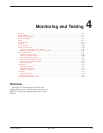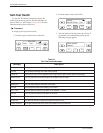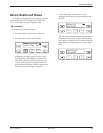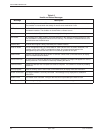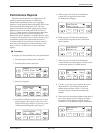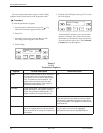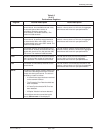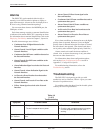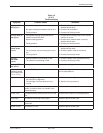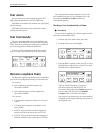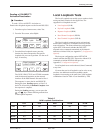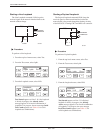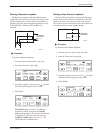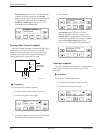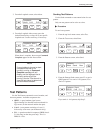
ACCULINK 3163 DSU/CSU
4-8 March 1999 3163-A2-GB20-10
Alarms
The DSU/CSU can be attached, either locally or
remotely, to an ASCII terminal or printer to display or
print alarm messages. Alarms can also be displayed on a
PC that is using a terminal emulation package.
You can route these alarms to the MODEM port, the
COM port, or both.
Each alarm message contains a customer identification
to indicate which remote DSU/CSU is reporting an alarm.
For information about customer identification, refer to the
Displaying Unit Identity section in Chapter 3, Operation.
Possible alarm messages are as follows:
• Continuous Loss Of Signal detected at the
Network Interface.
• Alarm Cleared. Loss Of Signal condition at the
Network Interface.
• Continuous Out Of Frame condition detected at
the Network Interface.
• Alarm Cleared. Out Of Frame condition at the
Network Interface.
• Alarm Indication Signal received at the Network
Interface.
• Alarm Cleared. Alarm Indication Signal at the
Network Interface.
• An Excessive Error Rate has been detected at
the Network Interface.
• Alarm Cleared. An Excessive Error Rate at the
Network Interface.
• Yellow Alarm signal received at the Network
Interface.
• Alarm Cleared. Yellow Alarm signal at the
Network Interface.
• Continuous Out Of Frame condition detected at
synchronous data port 1.
• Alarm Cleared. Out Of Frame condition at
synchronous data port 1.
• An Excessive Error Rate has been detected at
synchronous data port 1.
• Alarm Cleared. An Excessive Error Rate at
synchronous data port 1.
If two alarm conditions are detected at once, the higher
priority alarm is reported. However, if an even higher
priority alarm is detected before the first alarm is cleared,
the later alarm is not reported. (The alarms listed above
are in priority order with the highest priority listed first.)
Alarms remain active until the alarm condition is
cleared. Also, an alarm clear message is only sent when
there are no other alarms active.
For information about alarm configuration options,
refer to the Alarm Configuration Options section in
Appendix C, Configuration Options.
For troubleshooting information, refer to the
Troubleshooting section.
Troubleshooting
The DSU/CSU is designed to provide you with
trouble-free service. However, Table 4-4 gives you some
direction if a problem occurs.
For problems other than those listed in the table, please
contact your service representative.
Table 4-4
(1 of 2)
Troubleshooting
Symptom
Possible Cause Solutions
No power 1. The power module is not securely attached.
2. The wall receptacle has no power.
1. Check the power module attachment.
2. Check the wall receptacle power by plugging
in some equipment that is known to be
working.
Power-Up
Self-Test fails
The DSU/CSU has detected an internal hardware
failure.
Contact your service representative.




